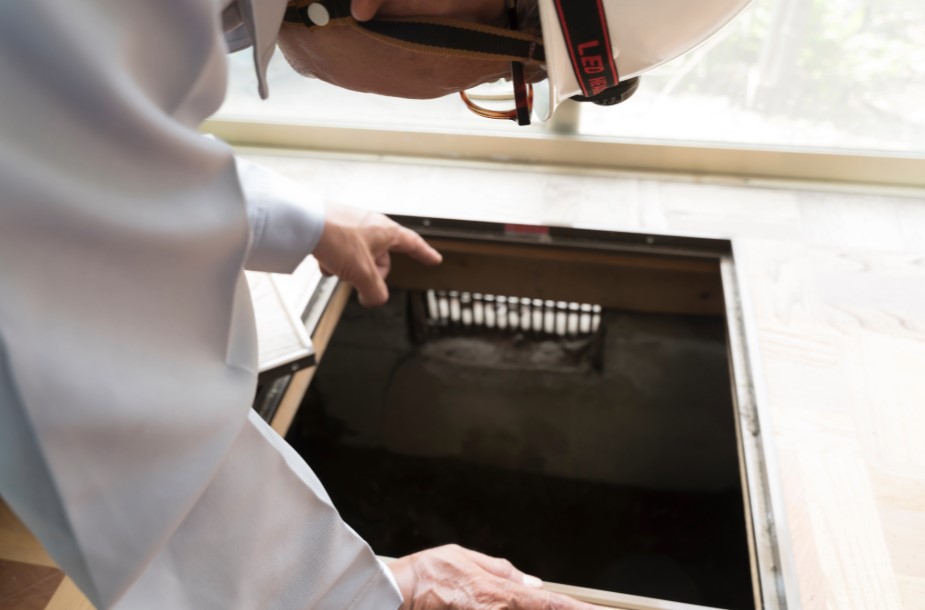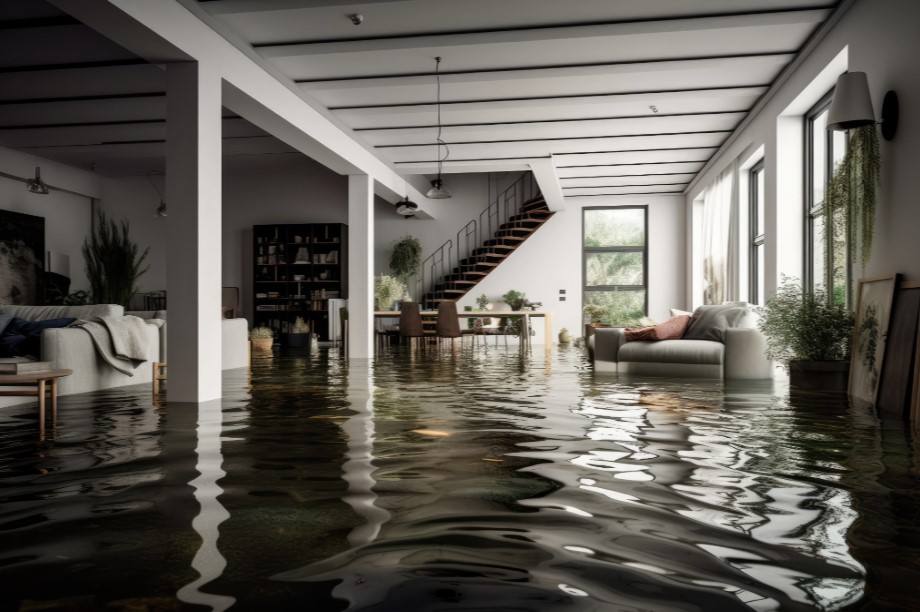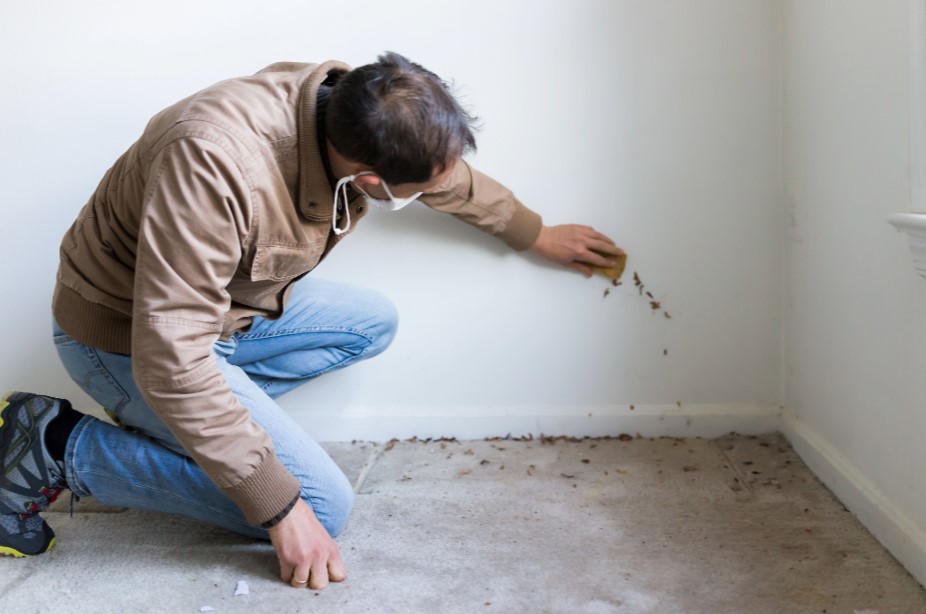
Consider getting a mold inspection when you buy a new home. Mold inspection is different from a regular house inspection. The cost may change due to the size of the home. How much does a home mold inspection cost? How do you know if a mold inspection and testing is worth it?
Hiring a professional Virginia mold inspector like MasterTech Environmental ensures you know exactly where the mold is present in your home, how much of it is hanging around, the type of mold you’re dealing with and whether it’s currently reproducing. Inspectors often double as remediators, so they’ll also follow up the job with removal options.
There are a few different situations in which you might want a mold inspection. Here’s when a mold inspection is needed, what mold testing does and the average cost.
What is mold?
Mold is a fungus, and like all fungi, it thrives in moist places. Mold spreads by emitting spores, microscopic particles often as small as a single cell. Spores float around in the air until they land on a surface. Mold spores are everywhere, outdoors as well as inside your house. It would be practically impossible to remove all mold spores from a house without installing some kind of massive industrial clean room filtration system.
Mold spores only form mold when they land on a moist surface. That means that if you can keep the interior of your home dry, you can avoid having any problems with mold. The best way to prevent mold in your home is to clean up spills, repair leaks in your roof, plumbing or HVAC system and make sure your kitchen and bathroom are properly venting moisture out of the house.
There are two major reasons to clean up and remove any mold growing in your house: mold damages the surface it is growing on and mold may aggravate allergies or asthma.
What Is a Mold Inspection?
Mold inspection determines if mold is present in Virginia homes. It starts with a simple visual inspection and can include air tests using specialized equipment, as surface-based mold presents different removal options than air-based spores. Professional Virginia mold inspectors search the basement, kitchen, bathroom and other parts of the home known to harbor higher-than-average moisture levels.
Once a technician finds mold, they’ll swab it and perform a stain test or a culture test to ascertain the type of mold present and its overall toxicity level.
When to inspect for mold
One good thing about mold- if you can see it, you have mold in your house. Seeing mold in the cracks and corners of your walls definitely means it is growing and spreading more spores. Keep in mind that mold may also grow in places you cannot see, such as in your ducts or between your walls. It may also form colonies so tiny they escape the eye. A few situations should make you look for any mold problems in your house.
- You see some mold. If you notice some green, blue, black or white stuff growing in your house, do a mold inspection to make sure you find it all. It might not be restricted to one location.
- Purchasing a new home. There is no way to know what kind of water damage may have happened in the house you are planning to buy. The only way to find out if mold is present is to do a mold inspection.
- Water damage. If your basement flooded, roof leaked, or a broken pipe sprayed water all over the kitchen, you need to inspect for mold. Any place that got wet and was not quickly dried (within 24 to 48 hours) could become contaminated by mold.
- After a house has been unoccupied. If a house has been closed up and unoccupied for months or years, humidity could have built up inside and caused mold to grow. This is especially a problem in warmer areas with high humidity.
- After mold remediation. If you have gone through the often expensive and difficult steps to deal with a mold problem, regular mold inspections are a good idea to make sure you really got rid of it all.

Mold inspection vs. mold testing
If you are researching mold, you might come across different services and costs that list both mold inspection and mold testing. Mold inspection simply identifies the presence of mold and generally defines the size of the problem, usually in square footage.
Mold testing attempts to identify what specific type of mold is in your home and how many mold spores are in the air. However keep in mind the following:
- The carefully controlled conditions required to conduct a proper scientific test of mold are extremely difficult to achieve in a home, so results will often vary from test to test, regardless of remediation efforts.
- Second, all indoor spaces have mold spores that drift in from outdoors, so mold tests will generally provide a long list of species, most of which are not actually growing in your home.
- Third, the EPA has set no guidelines for an acceptable amount of mold or mold spores in a house. Organizations like The Minnesota Department of Health and the New York State Department of Labor agree that mold testing is not always useful for this reason, and instead recommend hiring a professional to look for growing colonies. Note that some mold inspections include mold testing or sampling, particularly in states where it is required by law.
What happens during a Virginia mold inspection?
Mold inspection is, for the most part, a visual inspection of a house. There’s no special equipment involved aside from a good flashlight and tools that are sometimes needed to access restricted areas (like removing grates to inspect HVAC ducts). Some mold inspectors may use cameras. A moisture meter might also be useful in determining if a particular area is wet, especially after remediation.
A Virginia mold inspection involves the inspector talking to the property owner about any areas where they have seen mold, or where there have been moisture problems or water damage in the past. The inspector will go over the house thoroughly, looking in places known to be prone to mold growth. If there is a chance mold is growing in an inaccessible space, the inspector may have to damage a section of drywall or remove paneling to get a better look. If mold is detected, the inspector will try to find the source of the moisture that is causing the mold and talk to the homeowner to develop a remediation plan.
In some municipalities, mold inspectors must have a license or certification. Always look for a contractor with experience in mold inspection and mold remediation.
Both the EPA and experts like MasterTech Environmental suggest that a mold inspection is unnecessary if you can see mold, however mold testing is important to find out what kind of mold you are dealing with and the health risks and remediation method required. Then can move on to mold remediation. The remediation process will generally involve the contractor determining the extent of the problem.
What affects the cost of a mold inspection?
There are two main factors that affect the cost of a mold inspection: the size of the house being inspected and whether or not the inspector has to remove or destroy parts of the property, such as drywall or paneling, to complete the inspection.
Quite simply, a large house with a lot of square footage is going to cost more to inspect because the inspection is going to take longer. An “invasive” inspection involving digging through drywall or digging under a crawlspace is also going to cost extra because of the extra time and work involved.
How much does a mold inspection cost?
The cost of mold inspection can vary slightly from region to region, but the difference is generally pretty small. In fact, you are just as likely to find wider variations from one contractor to another in the same region.
As a rough guideline, a mold inspection costs about the same as a regular home inspection, the kind that is done when you purchase a new home. On average, mold inspection costs $300 to $500 for small to medium-sized houses (below 4,000 square feet). People with average-sized homes pay an average of $450 for this service.

Above 4,000 square feet, the cost increases to the $700 to $1100 range. Keep in mind that these costs are for inspection only and do not necessarily include testing. Skipping the unneeded mold testing can save you some money.
Some sources say hiring a licensed professional to do a home mold inspection costs anywhere from $250 to $1,100, depending on the size of your property, accessibility concerns, the type of test you choose and more. The higher end of the cost range is typically reserved for extremely large homes or even commercial spaces, making this average a bit high for typical residential jobs.
Extent of the Contamination
The extent of the contamination mostly impacts remediation costs, but may also change inspection costs. If your home is covered in mold, the samples will each have to undergo further analysis to determine the mold types and their toxicity levels. High levels of mold growth require an increase in the number surface tests required and labor hours spent conducting the inspection.
In this case, accessibility should not be a concern because the inspectors will be able to spot the mold at a glance.
Finding the right mold inspector
Look for a contractor with specific experience and expertise in mold inspections and remediation. Ask them how many mold remediations they’ve done in the last six months. Call around your area and get a few estimates. There might be a wide price range, so shopping around could save you a few hundred dollars.
Check your state health department or labor department to see if mold inspectors are required to have a special license or certification. If so, you obviously want to make sure you only work with a properly certified contractor.
After the inspection
If the mold inspection finds mold in your home, the next step is to make a remediation plan. This always begins with removing the source of the moisture that’s allowing the mold to grow. If you fail to remove the moisture, you can clean up all the mold and it will just grow back. Then, hard surfaces can be scrubbed and washed. Soft surfaces like carpets or foam tiles have to be cut out and replaced. It is impossible to clean all the mold off of porous surfaces.
This can be a do-it-yourself job if the mold is only in a small area. If the mold contamination exceeds 10 square feet, the EPA recommends calling in a contractor experienced in mold remediation. Mold can be dangerous, or at least unpleasant, to work with, especially for someone with allergies or asthma. That’s why larger contaminations are better left to professionals with the correct safety gear and cleaning equipment.
What Causes Mold in Virginia Homes?
We know that water is crucial for all life, and this includes mold. Standing pools of water, no matter how small, will eventually lead to mold growth. The same goes for areas that are consistently exposed to moisture, like around doors and windows, near pipes and any part of the roof that isn’t draining properly.
However, mold grows on just about anything, so that wood chair you’ve been storing in a dank and humid basement is just as susceptible as a plumbing leak. With that in mind, a consistent increase in humidity also causes mold growth, as does poor ventilation.
Preventing mold
Getting rid of mold in your house can be a major task, and remediation can be an extensive project if the mold is widespread. The best solution to mold problems is to prevent them from ever happening. Here are some tips on preventing mold:
- Repair leaks promptly. Whether it is a leak in your roof or a rusted out water pipe, fix leaks and keep moisture out of your house.
- Clean and dry things promptly. If your basement floods or condensation from your air-conditioner drips onto a carpet, dry everything out within 24 to 48 hours. Mold needs moisture to grow, so prompt drying is vital.
- Control humidity. Extremely humid air can provide enough moisture for mold to form on some surfaces. Use a dehumidifier in your basement and run air-conditioning when possible during the summer. Install vents in your kitchen and bathroom. This will keep humidity down and keep moisture under control.
Mold is a serious problem, and spotting mold contamination before it grows out of control can save you thousands of dollars. This makes the cost of a mold inspection well worth a few hundred dollars when you are buying a new house. The important thing is, if you see mold in your house, you need to get rid of it as soon as possible.
